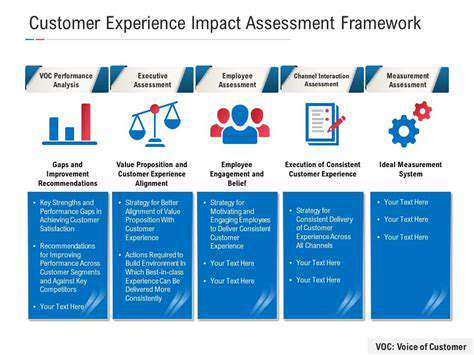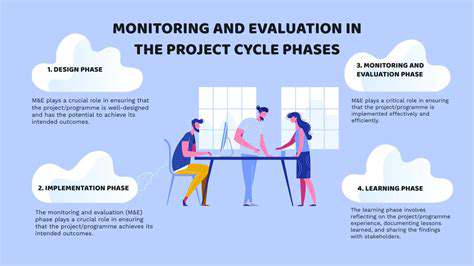Scalability and Infrastructure Demands
Scalability Challenges in IoT Data Management
As the number of connected devices in the Internet of Things (IoT) explodes, managing the sheer volume of data generated becomes a significant hurdle. IoT devices continuously stream data, creating massive datasets that require sophisticated storage, processing, and analysis capabilities. Traditional data management systems often struggle to handle this exponential growth, leading to performance bottlenecks and inefficiencies. The sheer scale of data also necessitates robust infrastructure to support the constant influx of information, demanding significant investment in hardware and software.
Furthermore, the diverse formats and types of data generated by various IoT devices add complexity. Different devices may record data in different formats, requiring complex transformations and integrations to consolidate and analyze the information effectively. This heterogeneity can make it challenging to establish a unified data platform capable of handling the diverse data streams efficiently.
Infrastructure Demands for Data Storage
Storing and managing the massive volumes of IoT data requires robust and scalable storage solutions. Cloud-based storage options are increasingly popular due to their flexibility and scalability, allowing organizations to adjust storage capacity as needed. However, the sheer volume of data demands careful consideration of data redundancy and backup strategies to ensure data integrity and availability in the event of system failures or outages. Moreover, the cost associated with maintaining and scaling cloud storage for massive datasets needs to be carefully evaluated.
Choosing the right storage technology is critical. Options range from traditional relational databases to NoSQL databases and specialized IoT data platforms. Each technology offers unique advantages and disadvantages, and the optimal choice depends on the specific data characteristics and analytical requirements of the IoT application.
Data Processing and Real-time Analytics
The continuous stream of data from IoT devices necessitates real-time processing and analysis capabilities. This enables rapid responses to events, proactive maintenance, and optimized decision-making. Real-time data processing solutions are crucial for applications like predictive maintenance, remote monitoring, and autonomous systems. Processing this data in real-time requires specialized tools and techniques to handle high-throughput data streams and extract valuable insights quickly and efficiently.
Data Security and Privacy Concerns
The interconnected nature of IoT devices makes them vulnerable to security breaches. Protecting sensitive data transmitted and stored by these devices is crucial. Implementing robust security measures, including encryption, access controls, and intrusion detection systems, is vital to prevent unauthorized access and data breaches. Ensuring data privacy in line with regulatory requirements is equally important, and organizations must adhere to strict privacy guidelines to maintain trust and avoid legal repercussions. Robust security protocols and compliance with relevant data protection regulations are paramount.
Data Integration and Interoperability
Different IoT devices and systems often use disparate data formats and communication protocols. Achieving seamless data integration and interoperability among these systems is crucial for effective analysis and decision-making. Standardized communication protocols and data formats can help overcome these challenges. Furthermore, integrating data from various sources requires well-designed data pipelines and robust data transformation tools to ensure data consistency and quality. Data silos and incompatible systems can severely impede the ability to derive meaningful insights from the vast amounts of collected data.
Maintaining Data Quality and Integrity
The volume and velocity of IoT data can lead to data quality issues. Ensuring data accuracy, completeness, and consistency is vital for reliable analysis and decision-making. Implementing data validation and cleansing procedures is essential to maintain data integrity. Moreover, monitoring data quality metrics, such as data completeness and accuracy, is crucial for identifying and addressing potential issues promptly. Robust data quality management systems are essential for harnessing the full potential of IoT data and minimizing the risk of drawing incorrect conclusions from flawed information.
Data Integration and Analysis Techniques
Data Collection Strategies for IoT
Effective IoT data integration hinges on robust data collection strategies. This involves choosing appropriate sensors and devices capable of capturing relevant information from the environment, be it temperature, pressure, or other parameters. Careful consideration must be given to the frequency of data acquisition, balancing the need for real-time insights with storage capacity and processing power constraints. Furthermore, standardization of data formats across different devices is crucial for seamless integration and analysis.
Various data collection methods exist, ranging from simple point-to-point connections to complex cloud-based platforms. Selecting the right approach depends on the specific application and the volume of data being generated. In some cases, edge computing might be a more efficient solution, enabling localized processing and reducing the strain on central servers. Implementing robust data validation and quality control measures from the initial collection stage is paramount to ensuring the accuracy and reliability of the subsequent analysis.
Data Transmission Protocols and Security
Secure and efficient data transmission is fundamental to IoT data integration. Selecting appropriate protocols like MQTT, CoAP, or AMQP is critical, ensuring low latency and reliable delivery of data packets. These protocols must be chosen based on the specific requirements of the IoT system, considering factors such as bandwidth limitations, network topology, and security considerations. This step also involves implementing robust security measures to protect sensitive data from unauthorized access or manipulation.
Data encryption techniques are essential to safeguard sensitive information transmitted over networks. Authentication and authorization mechanisms must be implemented to control access to the data and prevent unauthorized users from interacting with the system. Ensuring secure communication channels throughout the entire data pipeline is crucial to avoid breaches and maintain the confidentiality and integrity of the data.
Data Storage and Management Solutions
Effective IoT data integration requires suitable storage solutions to handle the massive volume of data generated by numerous devices. Cloud-based storage options offer scalability and flexibility, enabling easy expansion as the system grows. However, on-premises solutions might be more suitable for organizations with specific security or compliance requirements. Choosing the appropriate storage method depends on factors like data volume, access frequency, and cost constraints.
Data management strategies must encompass data organization, indexing, and retrieval mechanisms. Implementing appropriate database systems, including NoSQL databases for handling unstructured data, is crucial for efficient data storage and retrieval. Data warehousing and data lakes provide long-term storage and analysis capabilities, enabling organizations to derive valuable insights from historical data.
Data Preprocessing Techniques
Raw IoT data often requires significant preprocessing before analysis. This step involves cleaning, transforming, and formatting the data to ensure its quality and consistency. Techniques like handling missing values, outlier detection, and data normalization are essential to prepare the data for analysis. These techniques are paramount to ensure the accuracy and reliability of the subsequent analysis.
Data Analysis Techniques for IoT
Various data analysis techniques can be applied to IoT data to extract meaningful insights. Statistical analysis can reveal trends and patterns in the collected data, while machine learning algorithms can predict future behaviors or identify anomalies. Time series analysis is particularly useful for analyzing data collected over time, identifying patterns and anomalies in real-time.
Visualization Tools and Dashboards
Effective visualization of IoT data is essential for understanding and interpreting the insights derived from analysis. Interactive dashboards provide a clear and concise overview of key performance indicators (KPIs) and real-time data. Choosing the right visualization tools, such as charts, graphs, and maps, allows users to easily grasp complex data patterns and trends. Visualizations empower stakeholders to make informed decisions based on the insights gleaned from the data.
Data Integration Frameworks and Platforms
Robust data integration frameworks and platforms are essential for managing and connecting diverse IoT data sources. These platforms facilitate the seamless exchange of data between different systems and applications. By selecting suitable platforms, organizations can streamline data management and analysis workflows. This step is crucial for ensuring consistency and efficiency in the data integration process. Choosing the appropriate platform based on the specific needs of the organization is crucial for success.










